
views
Formatting Titles
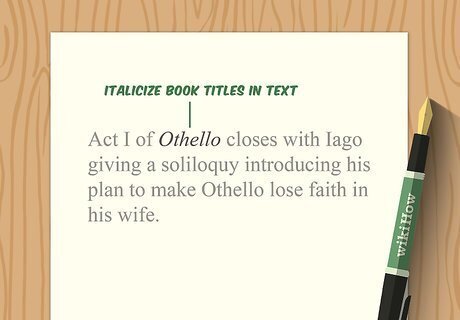
Italicize book titles in the text of your paper. Designate a book title as separate from the rest of your text by placing the complete title (and subtitle, if it has one) in italics. In contrast, shorter articles, essays, or chapters within the book are enclosed in quotation marks. Music album titles and film titles are also italicized. In earlier editions, the MLA Handbook also permitted titles to be underlined. The 8th edition confirms that underlining is no longer appropriate.Exception: Religious texts, such as the Bible or the Quran, are not italicized.

Use regular font style to distinguish a title within a title. Some book titles have another book title within them. Don't italicize those or other words, such as Latin words and phrases, that normally would be italicized in your text. For example, you might write: "In The Great Gatsby in the Classroom: Searching for the American Dream, David Dowling promotes the use of art and film to improve literacy."
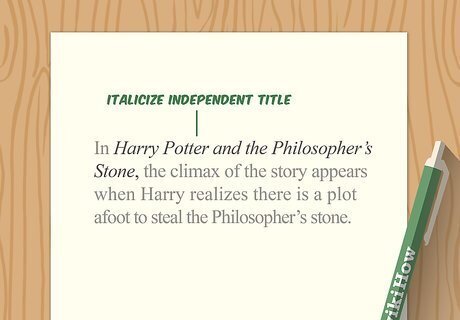
Italicize series titles that are independent or foundational. If a series is published as a single volume with an independent title, italicize the title just as you would any other book. For series or trilogies published in separate volumes, italicize the title of the series only if it appears in the titles of the individual books. For example, if you were talking about the Nancy Drew series, you would not italicize "Nancy Drew" because the name does not appear in the titles of any of the individual books. In contrast, Harry Potter would be italicized, because the name appears at the beginning of the title of every book in the series.
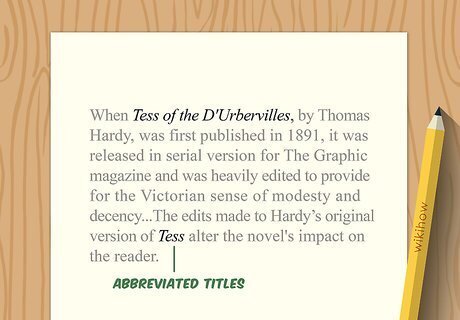
Abbreviate titles for subsequent mentions. Typically, you don't need to use the full title of a book more than once. The author's last name and a shortened version of the title typically are sufficient to let your readers know what book you mean. For example, if you were writing a paper on The Great Gatsby, you would need to include the full title in your text at least once. If you mentioned the novel more than once, you could use Gatsby as a shortened title. How you shorten the title generally depends on your own judgment. Use a word or words that evoke the title easily in the mind of the reader, without any ambiguity.
Capitalizing Titles

Capitalize the first word of the title and subtitle. No matter what the first word of the title or subtitle is, it is always capitalized in MLA style. This is true even if it wouldn't be capitalized if it were elsewhere in the title. For example, you might write: "Comedian Steve Martin takes on the art world in his novel An Object of Beauty. Note that the word "an" is capitalized because it is the first word. Otherwise, it would be in lowercase. If the book also has a subtitle, capitalize the first word of the subtitle just as you did the first word of the title.

Type articles and prepositions in lowercase. Unless an article or a preposition is the first word of a title or subtitle, it shouldn't be capitalized. The word to remains in lowercase even if it is part of an infinitive verb phrase. Articles include words such as "a," "an," and "the." Words such as "against," "in," and "to." Note that these words remain in lowercase regardless of their length.
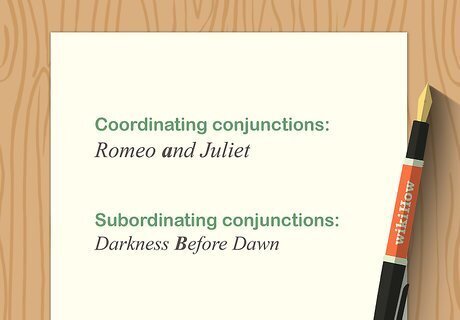
Distinguish coordinating conjunctions from subordinating conjunctions. Coordinating conjunctions join words or phrases together. Subordinating conjunctions introduce a condition or a dependent phrase. Coordinating conjunctions in titles are lowercase while subordinating conjunctions are capitalized. Coordinating conjunctions include words such as "and," "but," "for," and "nor." Subordinating conjunctions include words such as "after," "although," because," "unless," and "until."

Capitalize all other words in titles. In MLA style, nouns, pronouns, verbs, adverbs, and adjectives are all capitalized in titles and subtitles. This is the case regardless of the length of the word or where in the title it appears. Example: Storytelling and Mythmaking: Images from Film and LiteratureTip: If you have doubts about the parts of speech of the words in a title, you can check your capitalization using free capitalization checkers available online.
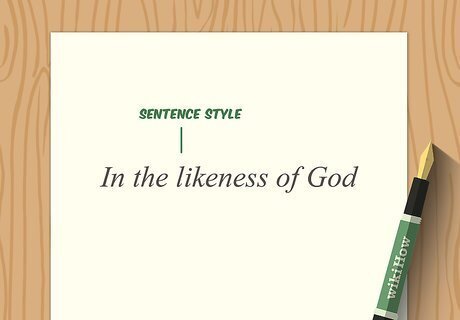
Use sentence style for titles in languages other than English. MLA follows other style guides in using sentence style for titles in other languages. Generally, capitalize only the first word and any proper nouns in the title. Formatting rules remain the same, so the title should still be italicized. Capitalize all words that would be capitalized in the language the title is written in. For example, since all nouns are capitalized in German, you would capitalize all nouns in a German book title.
Punctuating Titles

Include punctuation that is part of the title or subtitle. Generally, punctuation is only included in a title or subtitle if it was used in the original work. This general rule applies even if the original punctuation seems incorrect or confusing. For example, if a title ends in an exclamation point or a question mark, you would include that punctuation mark at the end of the title. The punctuation mark should be italicized so that your readers understand that it's part of the title, not part of your punctuation. If the book title ends in a question mark or an exclamation point, it's typically not a good idea to use that title at the end of a sentence, because then the punctuation mark at the end of the book title effectively becomes the punctuation mark for the end of your sentence. Recast your sentence so that the book title doesn't fall at the end of the sentence.
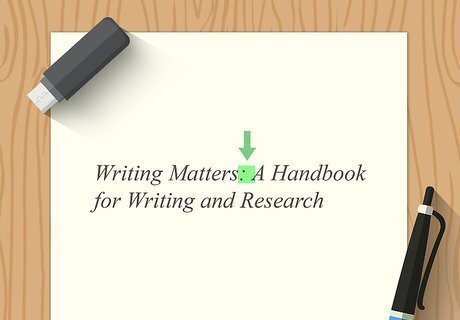
Separate a subtitle from a title with a colon and a space. If the book has a subtitle, you typically place a colon at the end of the title, then a space, then type the subtitle. However, if the title of the book ends with a question mark or exclamation point, don't follow that punctuation mark with a colon. There is an exception if the book title includes another book title, and the included book title ends in a question mark or exclamation point. Since that punctuation mark belongs to the included book title, you would follow that punctuation mark with a colon. For example: Moby Dick and Absalom, Absalom!: Two American Masterpieces Note that the colon is italicized.

Place a period or comma after a title ending in a dash or ellipsis. When a title ends in a dash or ellipsis, either a period or a comma is necessary to distinguish the title from the rest of the text. Since you can't tell if a dash or ellipsis is italicized just by glancing at them, this punctuation mark tells your readers that the ending punctuation belongs to the title and not to your text. For example, you might write: "In the 1980s sitcom When Harry Met Sally. . ., the characters examined whether heterosexual cisgender men and women could be friends without ever becoming romantically or sexually involved." Note that you'll have to form your sentence so that either a comma or a period is appropriate following the ellipsis or a dash.Tip: Although it might be difficult for the average person to tell whether a punctuation mark such as a comma or period is italicized, technically any punctuation added to the end of the title should not be italicized.
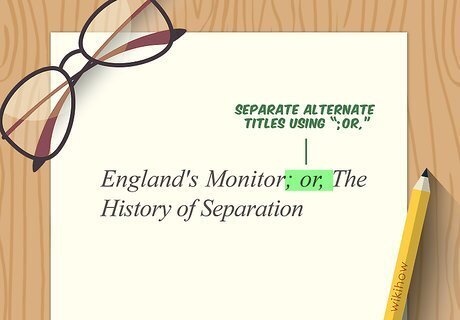
Use a semi-colon and the word or to separate alternate titles. Some books, particularly books originally written in languages other than English, may have alternate titles. At least in the first mention of the book when the full title is used, include both alternates. Type a semi-colon after the first title, then a space, then the word "or" followed by a comma. Type a space, then the secondary title. For example: England's Monitor; or, The History of Separation. Note that the "or" and all punctuation are also italicized. Generally, list the original or oldest title first, followed by any later title.

Add the serial comma if necessary for books published in the US. Although the general rule is not to add any punctuation to a title that isn't included in the original work, the MLA Handbook makes an exception for the serial comma. However, this exception only applies to books published in the US. If the book was published elsewhere, follow the punctuation in the original work. For example, since the book Everything Is Nothing: The Poetry of the Great War, Revolution and the Transformation of Europe was published in London, the serial comma would not be added. However, if the book were published in the US, you would add a comma after the word "Revolution."

















Comments
0 comment